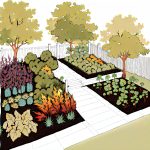Beautiful Plants For Your Interior

Introduction to the Global Food Scarcity Challenge
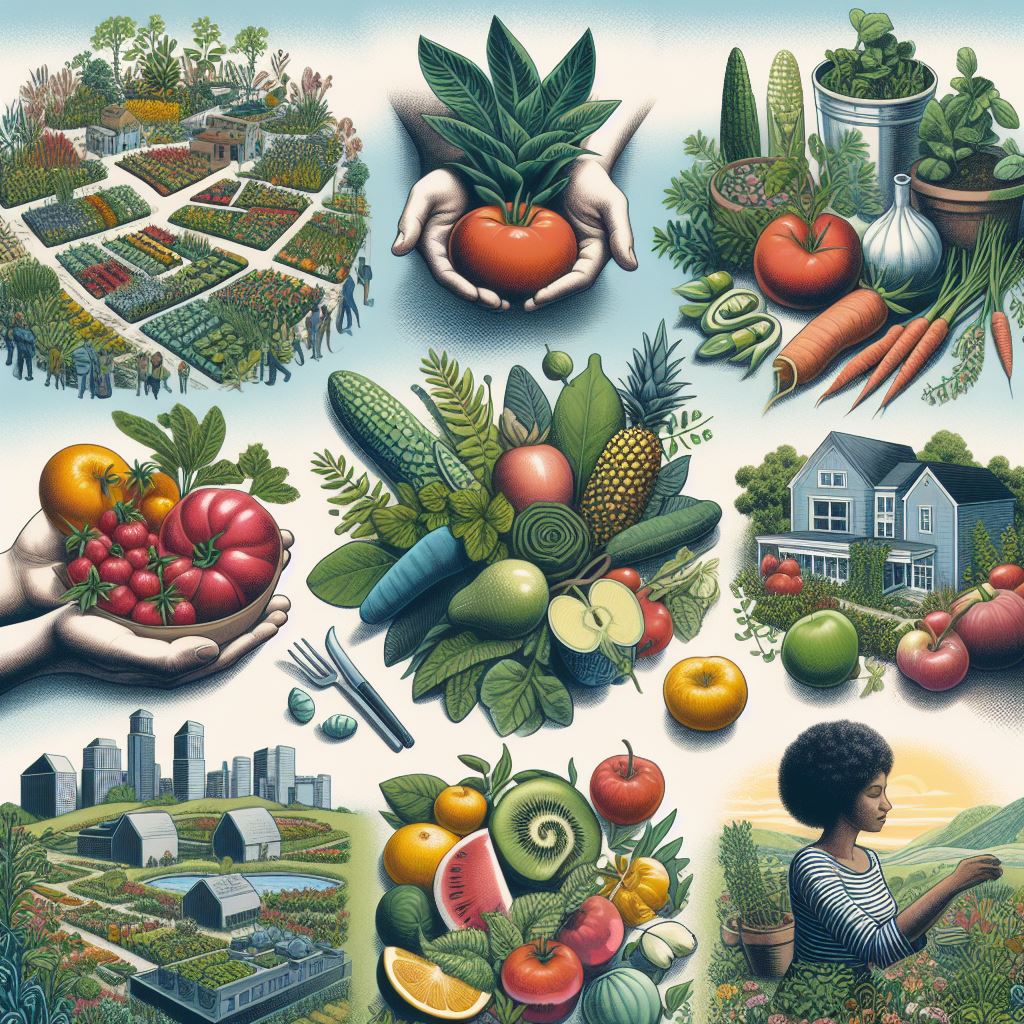
Food scarcity remains one of the most pressing issues facing the global population today. As urban areas expand and natural resources are stretched thin, finding innovative solutions to feed the growing population has become critical. In this context, sustainable edible landscapes emerge as a promising approach to not only beautify our living spaces but also provide a viable source of fresh produce.
Edible landscaping offers a dual solution by utilizing available urban space for food production while simultaneously enhancing the aesthetic value of these areas. This approach leverages underutilized spaces such as rooftops, balconies, and even roadside verges to cultivate fruits, vegetables, and herbs, contributing to the mitigation of urban food deserts. By integrating edible plants into the urban fabric, cities can foster community engagement, promote healthy eating habits, and increase biodiversity, making them more resilient to food scarcity challenges.
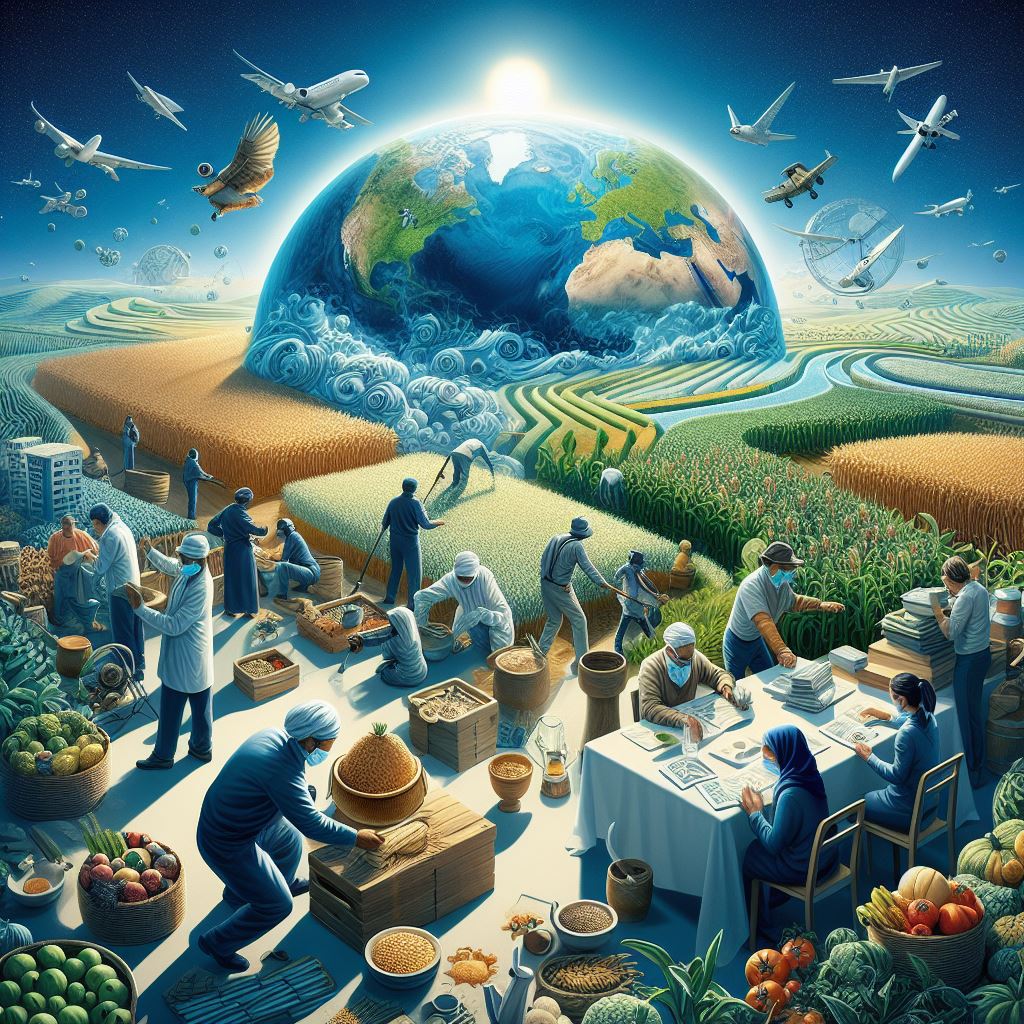
The issue of food scarcity is accentuated by the rising number of people facing hunger globally. According to the FAO’s “The State of Food Security and Nutrition in the World 2021” report, there was a significant increase in the number of people affected by hunger in 2020, largely due to the COVID-19 pandemic. The prevalence of undernourishment climbed to around 9.9 percent in 2020, up from 8.4 percent a year earlier, estimating that between 720 and 811 million people worldwide faced hunger in that year (FAO).
The World Bank’s updates on food security highlight the ongoing challenges in addressing food scarcity. In April 2024, it was reported that domestic food price inflation remains high across various income countries, with over half of the low-income and lower-middle-income countries experiencing inflation higher than 5%. This situation is further complicated by external factors such as supply disruptions, weather conditions, and disease outbreaks in major producer countries, affecting commodity prices like cocoa, wheat, and maize (World Bank).
To combat these challenges, the World Bank has significantly increased its commitment to tackling the crisis, making $45 billion available for food and nutrition security interventions across 90 countries. These interventions aim not only to provide immediate relief but also to foster long-term resilience through measures like boosting productivity and adopting climate-smart agricultural practices. This comprehensive approach is expected to benefit millions of people, with a significant focus on the most vulnerable populations, including women who are disproportionately affected by the crisis (World Bank).

These efforts align with the concept of sustainable edible landscapes as a localized solution to food scarcity. By integrating food production into urban environments, edible landscapes can contribute to reducing the reliance on imported foods, mitigating the impact of food price inflation, and enhancing food security at the community level. This approach not only addresses the immediate needs for fresh produce but also promotes long-term sustainability and resilience in the face of global food security challenges.
The Essence of Sustainable Edible Landscaping
Sustainable edible landscaping is a revolutionary approach that integrates food-producing plants into urban and suburban landscapes. It transforms gardens, parks, and communal spaces into areas that are not only aesthetically pleasing but also functional in terms of food production. This method champions biodiversity, supports local ecosystems, and reduces the carbon footprint associated with traditional food production and transportation. Beyond its environmental benefits, sustainable edible landscaping also encourages a deeper connection between people and the food they consume. By involving community members in the cultivation process, it fosters a sense of ownership and stewardship towards local food sources. This hands-on interaction with food production can lead to a greater appreciation for sustainable living practices and encourage healthier eating habits, further contributing to the overall well-being of the community.
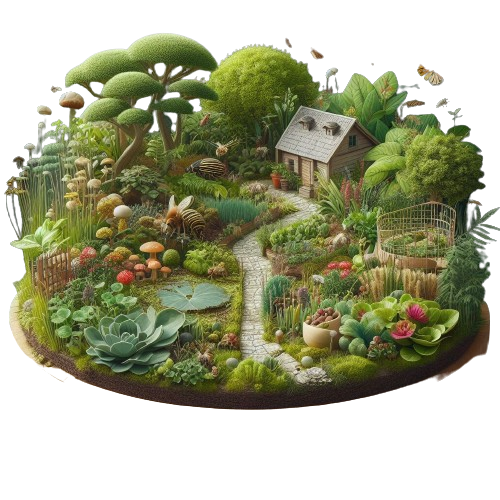
Sustainable edible landscaping beautifully combines functionality with aesthetic appeal, transforming gardens, parks, and communal spaces into productive areas that provide fresh produce while enhancing visual pleasure. This innovative approach emphasizes the integration of food-producing plants into urban and suburban landscapes, supporting biodiversity, bolstering local ecosystems, and reducing the carbon footprint associated with traditional food production and transportation methods.
When planning and designing an edible landscape, it’s crucial to have a clear vision and a well-thought-out plan that includes spacing considerations, proper placement of plants, and understanding of companion planting. Selecting self-pollinating plants and those suitable for your gardening zone can ensure a successful and productive landscape. Moreover, incorporating perennials can offer low-maintenance gardening and a sustainable landscape that continues to provide food year after year. Sketching out a plan can help in achieving a well-organized and visually appealing arrangement of plants (Green Life Zen).
A well-designed edible landscape not only serves as a source of fresh produce but also as an area of stunning visual appeal. Selecting the right plants is crucial for creating a landscape that is both beautiful and bountiful, focusing on varieties that will thrive in the local climate and soil conditions. Incorporating fruit trees, shrubs, vegetables, and aromatic herbs can add layers of scent and splashes of color, contributing to a cohesive and vibrant landscape. Strategic plant placement, considering sun exposure and wind protection, along with companion planting, can optimize plant health and productivity. Moreover, employing natural pest control methods and utilizing efficient watering practices are essential for maintaining a flourishing edible landscape (Discover Real Food in Texas) (The Farming Insider).
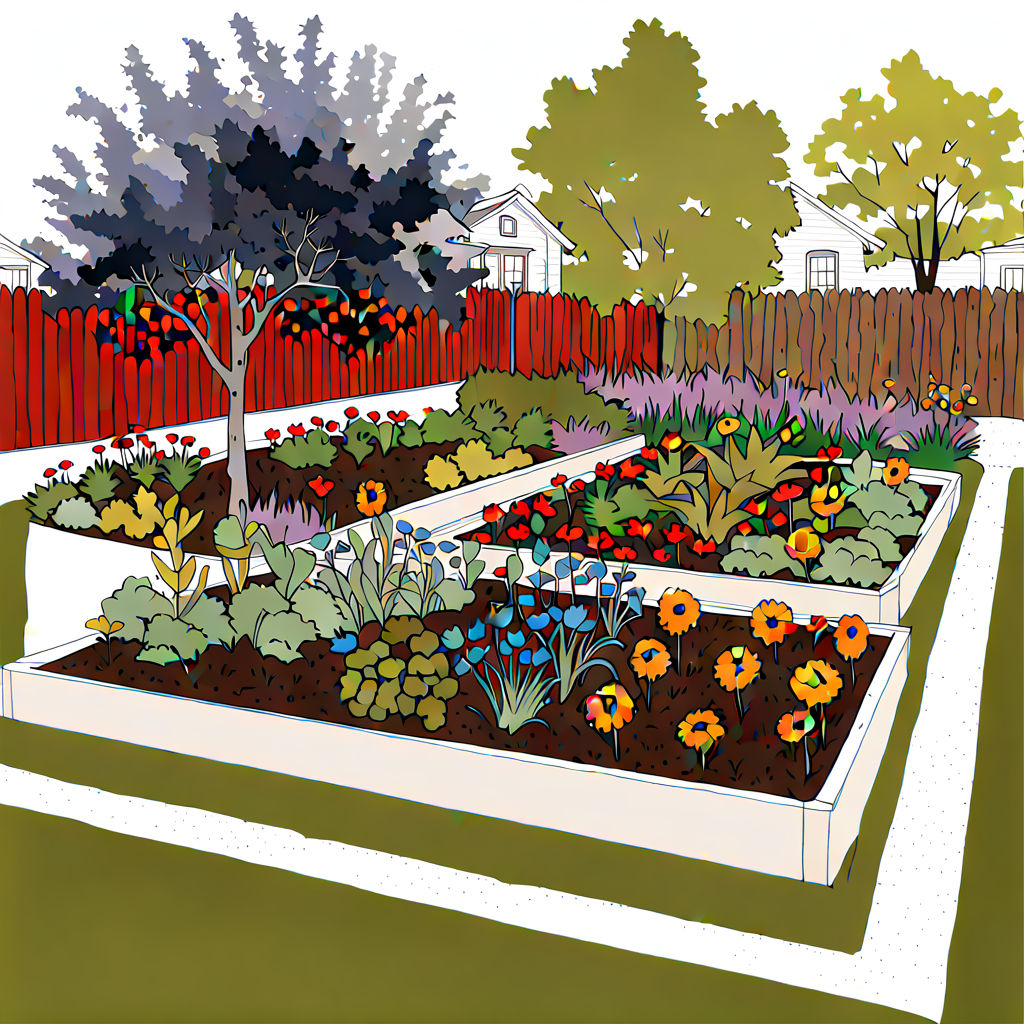
Schedule a Free Consultation
In essence, sustainable edible landscaping is a holistic approach that marries the beauty of landscape design with the practical benefits of food production. It encourages a deeper connection between people and the food they consume, fostering community engagement and promoting sustainable living practices. By carefully considering plant selection, design principles, and maintenance practices, you can create an edible landscape that not only addresses food scarcity but also enhances the quality of urban living spaces.
Selecting the Right Plants for Your Edible Landscape
The foundation of any edible landscape is the selection of appropriate plants that are suited to the local climate, soil, and water availability. From fruit-bearing trees and shrubs to vegetable plots and herb gardens, the choices are vast. Incorporating native species can further enhance sustainability by attracting pollinators, improving soil health, and minimizing water usage. Careful selection of plants can also ensure year-round food production, providing fresh produce across different seasons. By choosing a mix of perennial and annual plants, edible landscapes can offer a continuous supply of fruits, vegetables, and herbs, maximizing the productivity of the space. Additionally, integrating companion planting strategies can naturally deter pests and diseases, reducing the need for chemical inputs and further promoting ecological balance within the landscape.
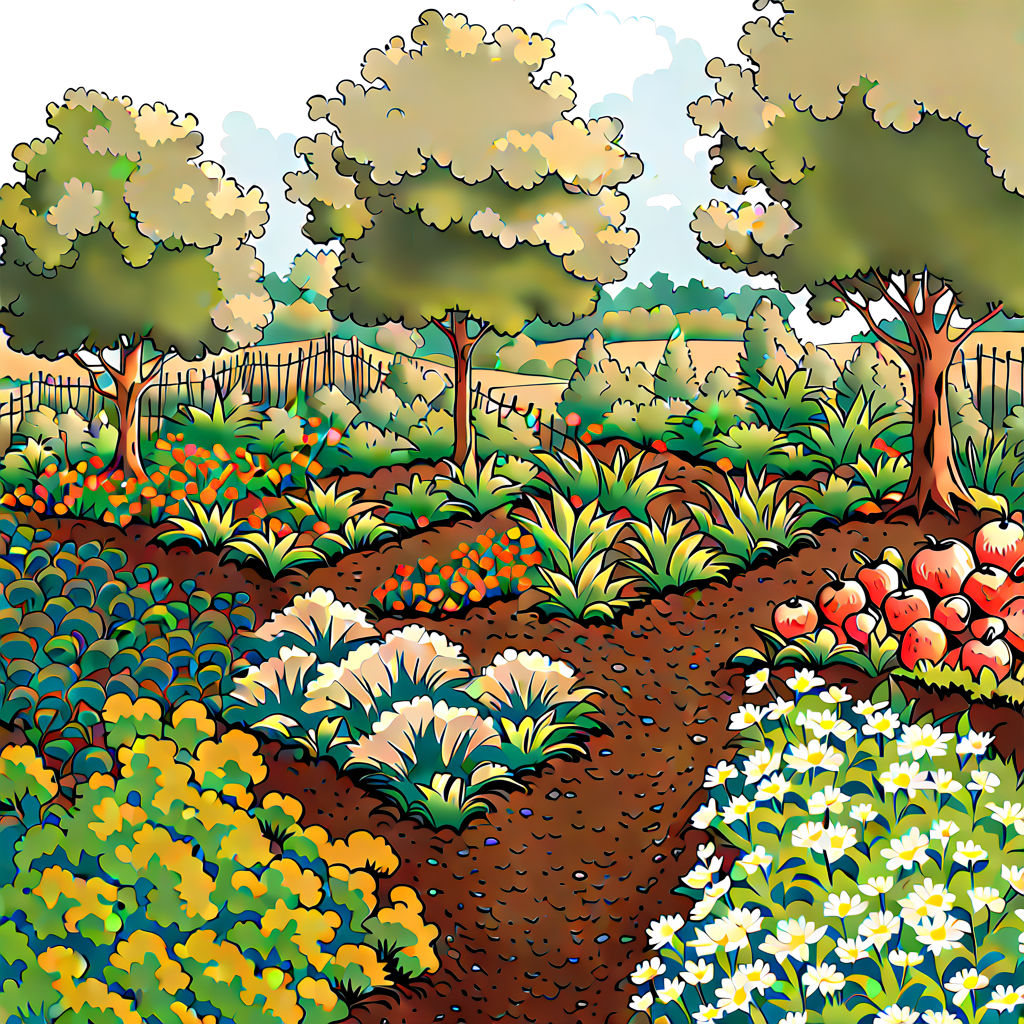
Selecting the right plants for your edible landscape is a crucial step in creating a garden that is both beautiful and productive. When planning your edible landscape, consider starting with simple additions that don’t compromise the aesthetics of your space. You can integrate ornamental yet productive plants like rainbow chard, strawberry plants, and blueberry bushes that add color and serve a dual purpose. Incorporate structures like fences or arbors for vining fruits such as grapes or kiwi, which add an attractive feature to your garden. Also, consider the visual contrast by mixing salad greens among bright bulbs or using containers to add color with small hot pepper plants (Almanac.com).
When it comes to plant types, it’s essential to understand the preferences of the plants you wish to grow. Most edible plants thrive in either a “meadow” environment, which includes many annual vegetables grown from seeds, or a “forest” environment, often consisting of woody shrubs and understory perennials. Design your beds to mimic these natural habitats for healthier plants and increased yield. For instance, place your “meadow” beds in full sun with light mulches, and locate your “forest” beds in areas with full to part sun using heavier mulches (GrowJourney).

Your choices should also be influenced by your local climate and the USDA zones in which you reside. For example, if you’re in USDA Zones 6-8, you might consider grapes, blueberries, tomatoes, and apple trees, among others. Those in colder Zones 2-5 could opt for hardy fruits like apples and cherries, along with ground covers like lettuces and herbs that can thrive until the first frost. In warmer Zones 9 and up, consider citrus trees, strawberries, and melons, which are well-suited for higher temperatures (Insteading).
Remember, your edible landscape should reflect your dietary preferences and the number of people you aim to feed. Choose plants that you enjoy eating and that will thrive in your garden’s specific conditions. This personalized approach ensures your garden is not only productive but also brings joy and satisfaction through the growing season.
The Transformative Impact of Edible Landscapes on Food Scarcity
Edible landscapes offer a scalable solution to food scarcity that can be adapted to various settings, from individual homes to community parks. By localizing food production, these landscapes can reduce reliance on imported foods, decrease food deserts in urban areas, and create a sense of food security among communities.
The adoption of edible landscapes across urban environments can significantly contribute to addressing global food scarcity by creating decentralized food systems that are more resilient to climate change and economic disruptions. These living, productive spaces not only provide immediate access to nutritious food but also educate communities about sustainable agriculture practices. As more people engage with and understand the value of edible landscapes, the potential for large-scale transformation in how cities address food scarcity and sustainability becomes increasingly achievable.

A Beginner’s Guide to Creating Your Edible Landscape
Starting an edible landscape requires planning and consideration. We will help you come up with a design that complements your space, considering factors like sunlight, soil type, and water access. Start small, perhaps with a few raised beds or containers, and gradually expand as you gain confidence and experience. Integrating edible landscaping into urban and suburban areas, as discussed in the global challenge of food scarcity, begins at the individual level.
By assessing your space’s unique conditions and potential, you can contribute to a larger movement towards sustainable food production. Choosing the right mix of plants, as previously mentioned, is essential, ensuring they match your local climate and the micro-conditions of your garden. This step is foundational in creating a productive and sustainable edible landscape that not only feeds your household but also enhances the local ecosystem.
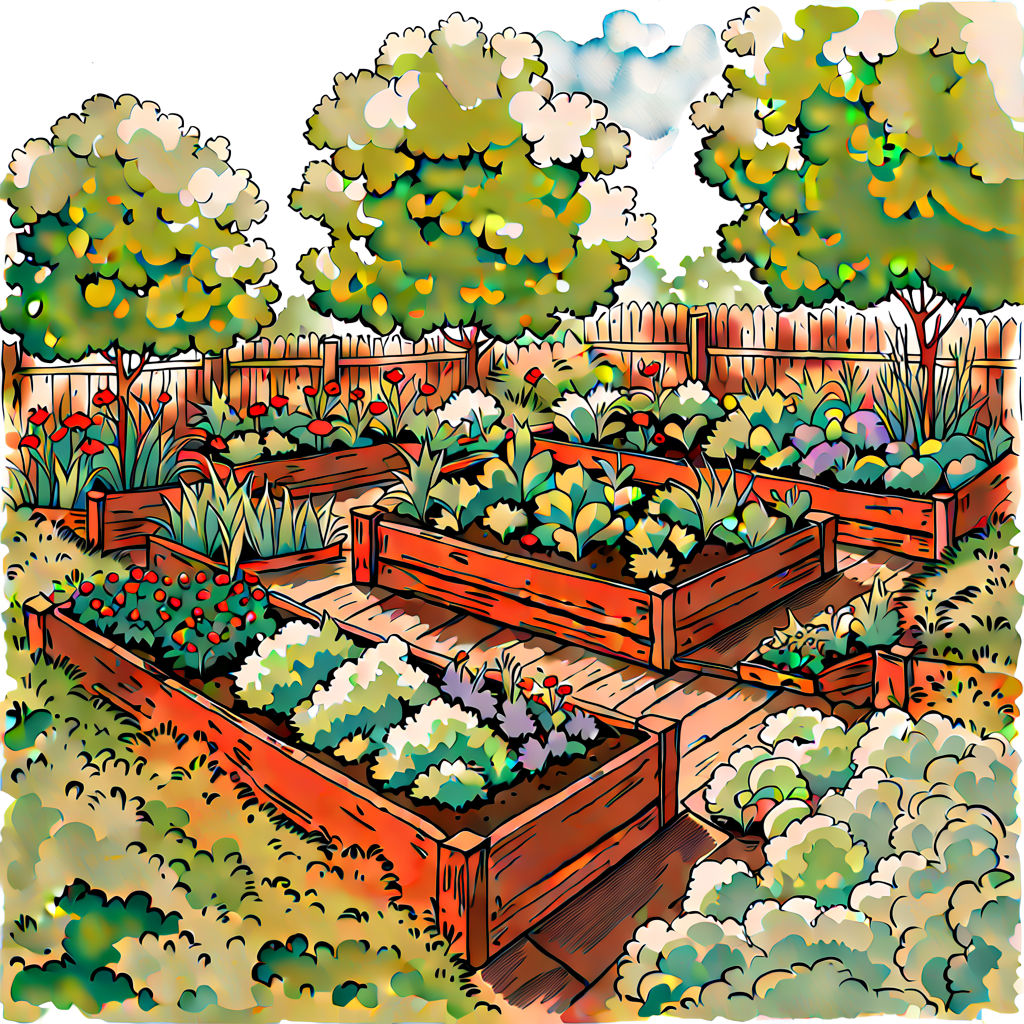
Nurturing and Sustaining Your Edible Landscape
Maintaining an edible landscape requires dedication and an understanding of sustainable practices, which are key to ensuring the health and productivity of your garden. With Edible Landscaping FL as your service provider, you can expect expert assistance with the majority of the maintenance tasks such as watering, pruning, and harvesting, allowing you to enjoy the fruits of your garden with less labor on your part.
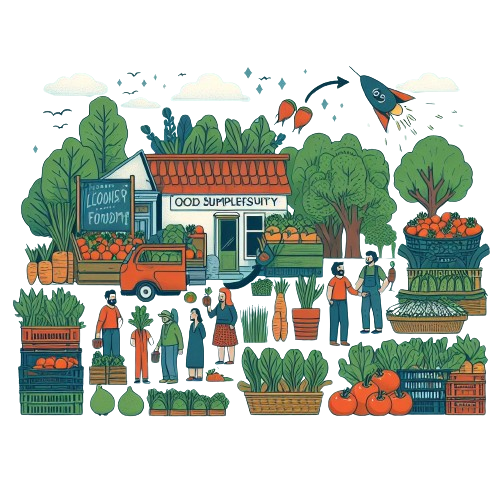
Schedule a Consultation and bring an Edible Landscape to your lawn tomorrow!
Adopting organic practices is vital for the sustainability of your landscape. Utilizing slow-release fertilizers is recommended to avoid foliage burn and to ensure that plants fully absorb the nutrients, contributing to larger yields while protecting the environment. If you prefer an organic approach, consider using organic fertilizers and enriching your soil with compost, which recycles plant nutrients and improves soil structure, water-holding capacity, and biological activity. Composted animal manure is also an excellent source of organic matter and can significantly improve soil fertility when used appropriately (Ask IFAS – Powered by EDIS).
Proper irrigation is crucial in maintaining a healthy edible landscape. Inspecting your irrigation system regularly for issues such as geysers, excessive pooling, or dry spots is important to ensure efficient watering. Adjusting irrigation timing based on seasonal rainfall can help conserve water and ensure your plants receive the right amount of hydration without wasting resources (Ask IFAS – Powered by EDIS).
Pruning plays a vital role in maintaining the structural stability of fruit trees and shrubs, encouraging larger fruit development, and rejuvenating the plants. It’s essential to clean pruning tools before use on other plants to prevent disease transmission. Also, consider the specific needs of each plant when pruning, as different plants may require different approaches. For example, removing tomato shoots can promote more flower growth and greater fruit production, while pruning peach and citrus trees during their first two years helps the young trees focus more energy on developing strong roots and leaves, leading to healthier plants and greater fruit production in subsequent years (Ask IFAS – Powered by EDIS).
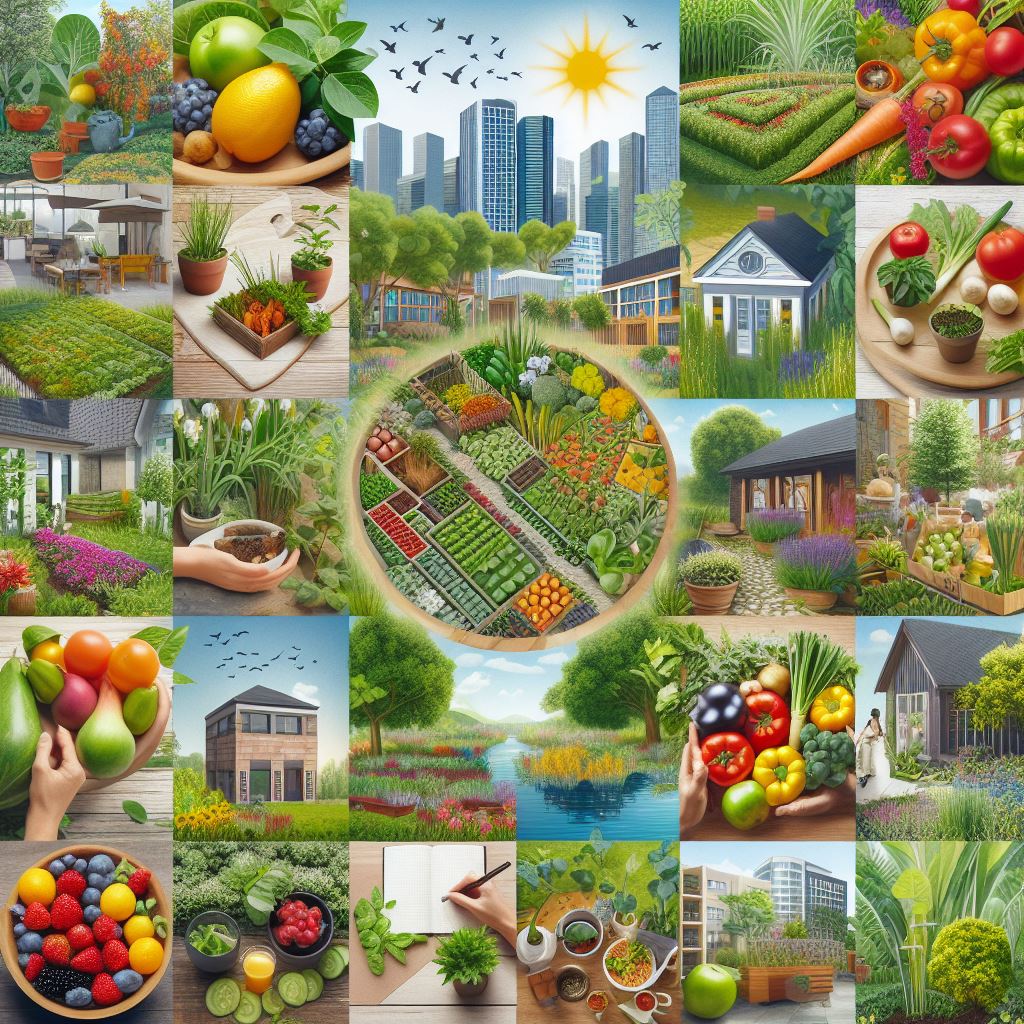
Harvesting your produce at the right time is key to enjoying the best flavors and nutritional benefits. Keep an eye out for signs of maturity in fruits and vegetables, such as color changes and the emission of their signature scents. Be mindful of the harvesting methods suitable for different types of plants to ensure you do not damage the plants or the produce during harvesting (Ask IFAS – Powered by EDIS).
With Edible Landscaping FL by your side, combined with your dedication to sustainable and organic gardening practices, you can create a thriving edible landscape that is not only productive but also a beautiful and sustainable addition to your home.
Inspirational Success Stories of Edible Landscapes
Across the globe, there are numerous success stories of edible landscapes making a significant impact. From community gardens in urban centers providing fresh produce to residents, to schools incorporating edible landscapes as educational tools, these examples serve as a testament to the viability and effectiveness of this approach. These success stories not only highlight the potential of edible landscapes to mitigate food scarcity but also demonstrate their role in educating communities about sustainable food production. By learning from these examples, new enthusiasts can navigate the challenges of starting their edible landscapes, inspired by the tangible benefits seen worldwide.
Here are three inspirational success stories:
- Hunter Park, Lansing, Michigan: Once a neglected area frequented by gangs, Hunter Park transformed into a vibrant community hub thanks to the Allen Neighborhood Center (ANC) and the City of Lansing Parks and Recreation Department. The partnership led to the creation of a youth gardening program within the park, starting in a large greenhouse. The initiative expanded to include 24 raised beds used year-round, and the creation of “Garden in a Box” for residents with limited mobility, income, or gardening skills. The park now features an edible landscape where anyone can “eat their way through the park,” with an apple orchard, grapevine fences, berry bushes, and an edible ornamental garden. This project not only revitalized the park but also fostered improvements in the surrounding neighborhoods, including reduced crime (NationalParks).
- Rosalind Creasy’s Edible Landscape: Rosalind Creasy, a pioneer in the field of edible landscaping, showcases how integrating edible plants into home landscapes can be both beautiful and functional. By replacing traditional landscaping with herbs, rainbow chard, and paprika peppers, and opting for blueberries or fruit trees instead of non-fruiting ornamentals, Creasy demonstrates that edible landscapes can provide year-round beauty, fresh food, and significant savings. Her approach emphasizes the importance of choosing plants that grow well in one’s region and creating attractive designs with paths, arbors, and garden beds (MotherEarthLiving).
- Perennial Edible Landscapes: Transitioning to perennial edible landscapes can offer numerous benefits, such as increased food production stability, supplementing livestock feed, adding beauty, and promoting sustainability. For example, integrating chickens and ducks into the landscape can aid in soil aeration and fertilization, while selecting the right mix of perennial plants can create a visually appealing and productive garden. This approach encourages selecting plants suited to the local climate and soil pH, opting for disease-resistant varieties, and considering the specific needs of your area to ensure successful, long-lasting edible landscapes (Morning Chores).
These stories highlight the diverse benefits and approaches to creating edible landscapes, from community-wide projects to individual garden designs. They serve as a testament to the viability and impact of integrating edible plants into our living spaces.j
The Far-reaching Benefits of Edible Landscapes
Beyond addressing food scarcity, edible landscapes offer numerous environmental and social benefits. They enhance local biodiversity, improve air and soil quality, and provide educational opportunities for communities. Moreover, they foster a connection with nature and promote a sustainable lifestyle. This comprehensive range of benefits ties back to the initial discussion on the essence of sustainable edible landscaping, emphasizing its multifaceted impact. By integrating food production into urban environments, edible landscapes offer a holistic approach to solving not only food scarcity but also contributing to healthier, more sustainable communities.

Addressing the Challenges and Limitations
Addressing the Challenges and Limitations
While edible landscapes are promising, they are not without challenges. Issues such as land availability, water resources, and initial setup costs can be significant barriers. Overcoming these requires innovative solutions, community involvement, and supportive policies. These challenges underscore the need for a concerted effort in promoting edible landscaping, aligning with the global initiative to combat food scarcity. By addressing these barriers, communities can unlock the full potential of edible landscapes, making strides towards sustainable and self-sufficient food systems.
The Future of Edible Landscaping in Addressing Food Scarcity
The potential of sustainable edible landscapes in combating food scarcity is immense. As more individuals and communities embrace this approach, we can expect a shift towards more resilient and self-sufficient food systems. The journey towards sustainable edible landscapes is not only a step towards solving food scarcity but also a move towards a healthier planet and communities. This vision for the future ties directly to the initial discussion on the global food scarcity challenge, where edible landscapes were presented as a viable solution. As this practice gains momentum, it becomes a key component in the larger framework of sustainable urban development, offering a hopeful outlook for addressing one of the most pressing issues of our time.

The concept of sustainable edible landscapes presents a transformative approach to addressing the pressing challenge of global food scarcity. By integrating food-producing plants into urban and suburban settings, edible landscapes not only offer a solution to feeding the growing population but also contribute to the creation of resilient and self-sufficient food systems. This innovative practice aligns with the broader goals of sustainable urban development, promising a healthier planet and more vibrant communities.
Edible Landscapes of Florida stands at the forefront of this movement, ready to guide you through every step of creating and maintaining your own edible landscape. From the initial design phase to the ongoing care and harvesting of your garden, their team of experts ensures that your edible landscape thrives, contributing to both your table and the local ecosystem.
By choosing Edible Landscapes of Florida, you’re not just getting a service provider; you’re partnering with a team dedicated to realizing the potential of sustainable edible landscapes in your own backyard. They understand the unique climate and conditions of Florida, ensuring that your garden is both beautiful and bountiful.
To begin your journey towards a sustainable and productive garden, Edible Landscapes of Florida invites you to schedule a free consultation. This initial meeting is an opportunity to discuss your vision, explore the possibilities for your space, and lay the groundwork for a garden that not only feeds your family but also supports the environment and local wildlife.
As the practice of creating edible landscapes gains momentum, it becomes an integral part of the solution to food scarcity and a testament to the power of community and sustainable practices. By working with Edible Landscapes of Florida, you’re taking a meaningful step towards a future where gardens are not only places of beauty but also sources of sustenance and sustainability.

